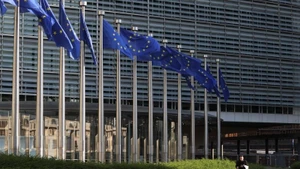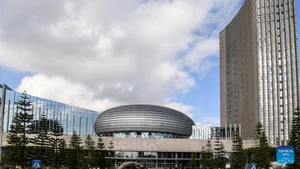This marks a turning point as solar and wind power are growing rapidly enough to meet rising electricity demand while contributing to solving the energy security problem.
For the first time, renewable energy has surpassed coal in terms of the total global electricity volume generated, with solar and wind energy expanding far beyond this year’s growth in demand. Notably, global solar power capacity rose by a record 31%, while wind power increased by 7.7%.
According to the latest report by the energy research organisation Ember, between January and June 2025, wind and solar power supplied around 5,072 terawatt-hours (TWh) of electricity — exceeding coal by 4,896 TWh. During the same period, global electricity demand increased by 2.6% (equivalent to 369 TWh), largely met by solar power (up 306 TWh) and wind power (up 97 TWh). This shows that renewable energy can now keep pace with the world’s surging electricity demand.
The two key driving forces of this renewable energy output growth trend are China and India. In the first six months of 2025, China led the world in renewable energy development and showed a slight reduction in its dependence on fossil fuels.
Accordingly, China’s solar power output rose by 43% and wind power by 16%, helping to cut fossil fuel-based electricity generation by 2%. As climate change continues to pose a global challenge, China has emerged as one of the leading nations in energy transition and renewable energy development. This is China’s strategic move toward the target of carbon neutrality, improving its ability to adapt natural disasters, and ensure sustainable development.
Meanwhile, India also reached record-high growth in solar and wind power, with both outpacing the country’s increase in electricity demand. Solar and wind power in the world’s most populous nation rose by 31% and 29% respectively, helping reduce coal and gas use by 3.1%.
In the context of surging electricity demand due to extreme weather, the rapid development of artificial intelligence (AI), the boom in data centres, electric vehicles, and heat pumps — all contributing an estimated 0.7% to global electricity demand growth in 2024 — renewable energy is becoming increasingly attractive. It is also playing a key role as nations are making efforts to strengthen energy security.
To meet growing electricity demand, many countries are encouraging diversification of power sources and technologies, while supporting investment, promoting technological innovation, and enabling efficient market operation to improve flexibility, recovery, and stability of power systems. Investment in electricity grid infrastructure such as energy storage systems, microgrids, and underground cables is also a critical factor to bolstering energy security.
A key focus is the development of the “Grid of the Future” — distribution systems in emerging economies designed to be renewable energy, digitally intelligent, and financially sustainable. The Global Energy Alliance for People and Planet (GEAPP) recently announced an investment of about 7.5 billion USD for the 2026–2030 period to help developing countries transition to clean energy as the global fight against climate change faces mounting challenges, with more frequent and severe extreme weather events such as storms, floods, and prolonged heatwaves.
Transitioning to renewable energy is now seen as an inevitable path in green development. The remarkable growth of renewable energy sources in the global power structure shows that the renewable energy transition process is on the right track. The strong development of renewable energy helps to significantly reduce greenhouse gas emissions, giving hope that the world can accelerate the completion of goals for energy security and climate change prevention.
















